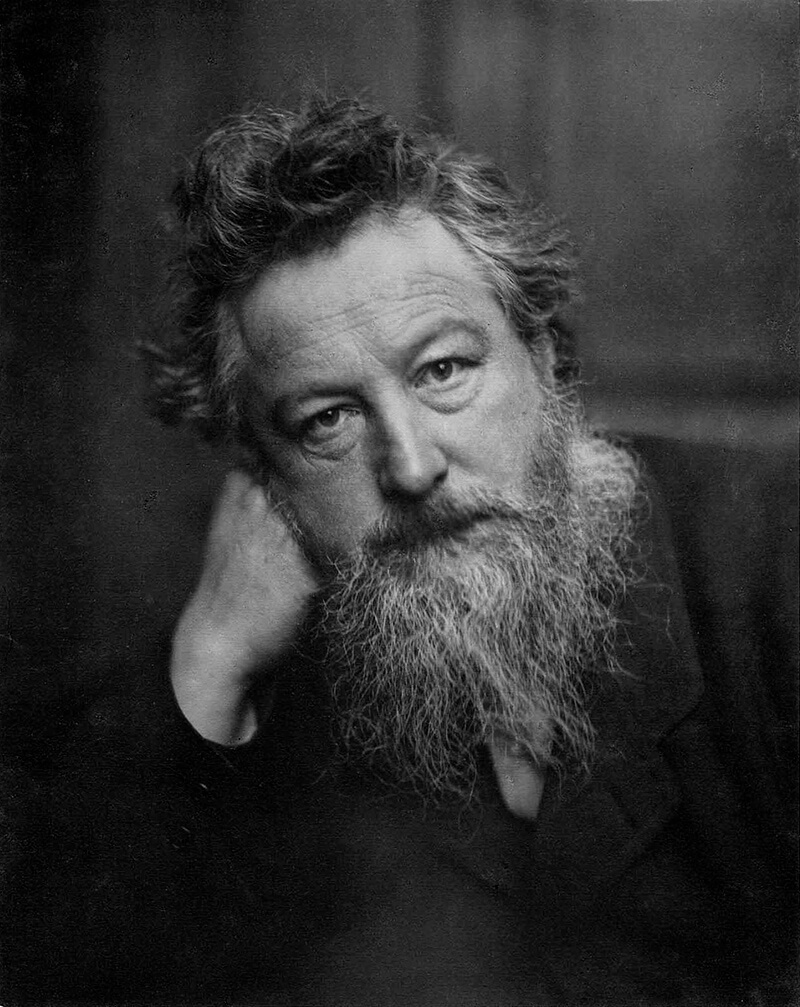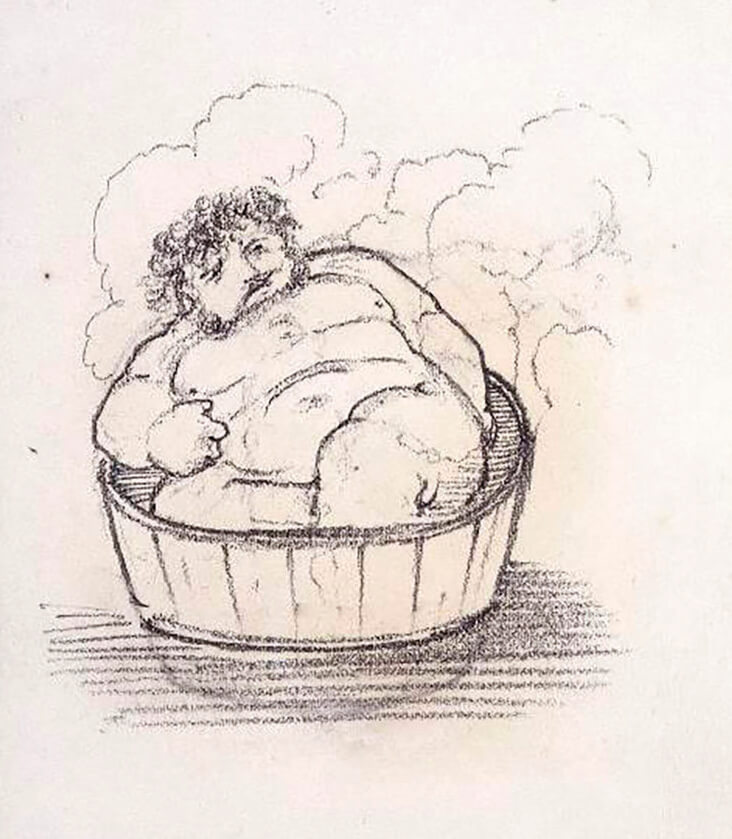SIMPLY BEING WILLIAM MORRIS
William Morris exercised a particularly wide influence as designer, craftsman, poet, socialist, promoter of fine workmanship and champion for the preservation of old buildings, and the Tower has played its part in the transmission of Morris’s ideas.

William Morris aged 53.

Sketch of William Morris in a bathtub by Edward Burne-Jones. Fitzwilliam Museum.
He established ‘The Firm’: Morris, Marshall, Faulkner & Co., (later to become Morris & Co.) a manufacturing and decorating firm, inspired by mediaeval guild practices in its dedication to fine craftsmanship, use of materials and ‘joy in labour’. Often combining the roles of designer and craftsman, Morris taught himself an astonishing variety of skills, including embroidery, calligraphy, manuscript illumination, dyeing, the weaving of carpets and high-warp tapestry. Most gifted as a creator of patterns based on natural forms, he devised a series of designs for chintzes and wallpapers, which have proved enduringly popular.
Thanks to Morris and his successors, the handicraft tradition has never died. Perhaps more importantly, Morris convinced the world that the making of everyday objects was not a ‘minor’ art – a cognition that was crucial in bringing about the 20th-century reconciliation between mass production, sound workmanship and good design.
An important and lasting legacy of Morris’s frequent visits to the Tower, was the growing passion that he developed for the ancient and historic buildings around him. It was on a journey through Burford when he experienced, as he wrote (in a letter dated 4th September, 1876 from the Tower itself), the ‘vandalism’ of the repairs being carried out on Burford church. Thus was founded, in 1877, The Society for The Preservation of Ancient Buildings.
An irrepressible pronouncer on all issues moral, cultural, artistic, social and political, Morris was a man of huge energy, loyalty, principle – and impatience. There are many accounts from Morris’s friends of their time at the Tower, not least how the winds around the Tower ‘blew away the cobwebs’ and Morris’s comic rage at the soap flying in gusts as he was having a bath on the roof of the Tower.
After his death on 3rd October 1896, one of his doctors diagnosed his disease as ‘simply being William Morris, and having done more work than most ten men’.
